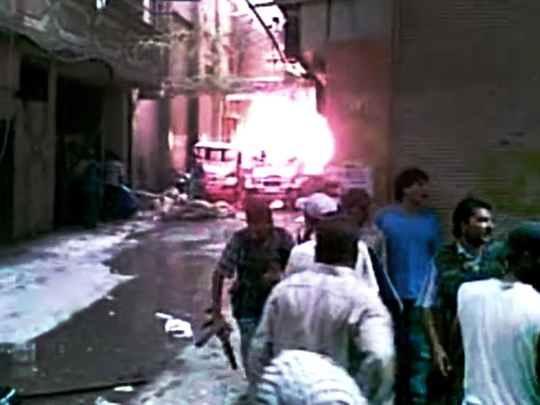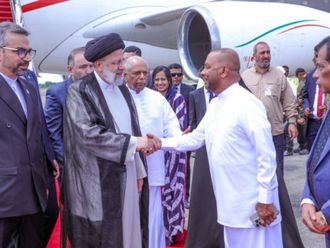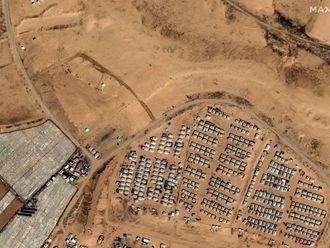
Beirut: The explosion that nearly decapitated the Baath regime in Damascus portrayed a probable end to the Bashar Al Assad regime now that the Syrian President lost several of his most trusted aides.
By reaching the top echelons of the government’s security hierarchy, opposition forces—most likely former Syrian Arab Army members who defected to the Free Syrian Army (FSA)—demonstrated intrinsic capabilities, which indicated that they were stronger than many assumed.
According to Riad Al Asaad, the FSA commander operating out of Hatay, Turkey, the attack was not a suicide operation but a bomb placed inside the room where senior government officials were meeting at the headquarters of Syria’s National Security Bureau.
If accurate, the claim amply illustrated that rebel forces enjoyed unprecedented access to Cabinet ministers as well as senior security officials and, given this precedent, it was important to ask whether FSA commandoes could hit the Presidential Palace. In the affirmative, could they prevent Al Assad from escaping unscathed, fleeing his native Damascus?
How events unfolded over the next few days and weeks may well determine the Baath regime’s destiny, though neither UN envoy Kofi Annan nor Russia’s President Vladimir Putin could alter the most likely outcome, namely a full-fledged regime change. Although the pragmatic Russian head of state was still concerned that the Syrian uprising could spillover into Russian controlled territories in the Caucasus, the Iranian regime was likewise confronted with the real possibility of losing its only Arab ally. Of course, Western powers led by the United States focused on Syria’s chemical weapons, and worked tirelessly to ensure that these were secured and that they would not be used.
Still, in the aftermath of the latest bombings, such strategic considerations were far less critical because Al Assad faced immediate challenges to survive and fight another day, or flee Syria altogether. Who could escape and where would they go are the two key questions that must now be raised? Among several options, two stood out although both redefined chaos as we understand the term. As a first option, the President and his immediate family could seek political asylum in Russia or Britain — if London accepts his wife Asma Al Akhras’ citizenship as a valid residency permit for the husband — while everyone else will probably have to fend for themselves. Naturally, remaining regime stalwarts will either put up heroic struggles to defend their lives and properties, or flee to neighbouring countries.
The second, more ominous option, could see the president and his acolytes retrench in Alawi strongholds from where they could sustain a prolonged war against the FSA. Long dismissed as a figment of the imagination, this historically valid choice may represent one of the few outlets available for the regime, which painstakingly contemplated and planned for a separate Alawi state. The idea was not new and was first designed in 1926 at the height of the French-British rivalry in the Middle East that followed the First World War. In their “mandate” over Syria, which Paris insisted was a quid pro quo for Iraq and Palestine that fell under British suzerainty, France sought to increase its position by supporting and separating religious minorities and thereby weakening the Arab nationalist movement. The northern Alawi State was one of three proposed sectarian entities, with a Sunni Muslim state at the centre of the country, and a Druze Republic in the south.
Because Hafeez Al Assad poured a disproportionately large percentage of his country’s resources into Latakia and surrounding Alawi dominated areas, his successor may find such a retrenchment a viable option, especially since the putative State would have access to the sea and remain a strategic bastion for its new patron, Russia. Whether the FSA-led government that will emerge in Damascus will accept such a separation was impossible to answer, although chances were good that a prolonged assault on the self-declared republic would literally ensure a sustained civil war. Still, the very idea of a separate Alawi Republic was a key option in Bashar Al Assad’s hands, with dire consequences for both Turkey and Lebanon.
Al Assad dismissed the spillover effects of the Arab uprisings that shook Tunisia, Egypt, Libya, and Yemen, by asserting that Syria was a stable country. He told the Wall Street Journal in January 2011 that Syrians were not in an ideological vacuum that, presumably, protected the country from upheavals. For nearly two years, hundreds of thousands of Syrians begged to differ, demonstrating and dying on a daily basis, even circulating a variety of jokes that essentially described the writing on the wall.
One involved the president and his barber who keeps whispering “Ceausescu!” as he cuts Al Assad’s hair. Sensitive to the implication, Al Assad frowns, ignores him a few times, before asking thebarber: “Why are you murmuring Ceausescu as you cut my hair?” The frightened but bold man answers: “Because every time you seem to hear the name Ceausescu, the hair on the back of your head stands up, and I can cut it easily.” Few can determine whether the joke will evolve and, perhaps, develop into a full-fledged killing spree a la Ceausescu.
Still, in various interviews to Arab and foreign news outlets, Syrian activists, revolutionaries or even simple refugees in Turkey, Jordan and Lebanon, make the Ceausescu connection. The fate that befell Nicolae Ceausescu might not be Bashar Al Assad’s, though it was worth recalling that the Romanian dictator was executed as he was trying to flee during a popular uprising in 1989, just like Muammar Gaddafi was captured in a drain underneath the road west of Sirte before he was shot on October 20, 2011.
Syria’s immediate future was enveloped in uncertainty though the most recent bombing illustrated that the regime’s options were perilously fewer than what were available just a few weeks ago.












